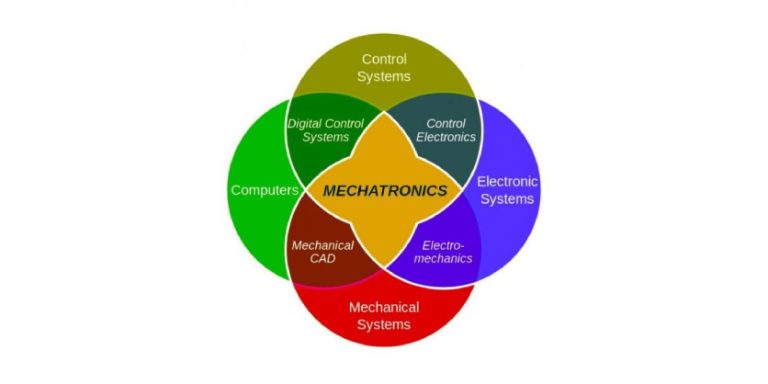Creating and Upskilling the Next Generation of Manufacturing Workers

September 2, 2021
More manufacturers see the business benefits of automating manual processes, but also realize that to seize on this opportunity they must hire people with the right skills.
MDX, a Department of Defense-funded research organization, developed a digital workforce taxonomy, which identified 165 new data-centric manufacturing jobs—such as “collaborative robotics technician” and “predictive maintenance systems specialist.”
Whether businesses are hiring for these new types of automation jobs now or looking to add them in the future, the challenge that still faces many is where to find skilled workers.
Today’s Manufacturing Labor Challenges
The skills gap report found millions of manufacturing jobs are going unfilled due to the lack of qualified workers. From small owner-operated businesses with a small staff to big companies employing thousands of employees, all these manufacturers face the same labor shortage.
What caused this situation is the consequence of several changes over the course of many years. For decades, younger people have not been encouraged to pursue manufacturing careers, thus, tending not to be interested in the industry. Some people still have an antiquated view of these types of jobs in environments mistakenly known as the three Ds: dirty, dull and dangerous. Also, some manufacturing operations moving overseas or across borders in the last few decades left younger people with the misperception that U.S. manufacturing was dead.
The Real American Manufacturing Market
According to the U.S. Census, manufacturing still employs one out of five people in the U.S. That figure could go higher since new manufacturing jobs appear to be increasing for a number of reasons, from a push for reshoring U.S. manufacturing to problems in the global supply chain during the recent COVID pandemic. Many point to bringing more production back to the U.S. as a solution to prevent future damaging supply chain disruptions as experienced during the shutdown. However, the type of manufacturing that will return or increase in this country will likely entail complex machining to fill demand for more high-tech sectors, such as medical device producers and aerospace suppliers.
With advances in automation, such as machine learning, increased capabilities of robotics and advances in artificial intelligence, more manufacturers see the enormous economic impact of changing manual processes by adding automation. However, many have workforce challenges, such as lacking qualified people to use these automation tools or seeing Baby Boomers, who have acquired decades of tribal knowledge, retiring and taking their operational experience with them.
FANUC America’s Solution to the Skills Gap
As manufacturing adopts more robotics and automation, the industry will require its workforce to do different types of duties. FANUC America recognized years ago that while companies wanted to add more technology, there was not enough supply of skilled workers in the field to support the demand.
“We’re deploying such advanced technology, such as with the emergence of cobots and data analytics, trying to get a workforce to keep up with that is very challenging,” says Paul Aiello, Executive Director of Education for FANUC America.
As a global automation leader with over 25 million products installed worldwide, FANUC America is well positioned to bring the most up-to-date automation training to the industry. There are two pathways to workforce solutions, as Aiello explains: Upskilling incumbent workers and developing talent in the pipeline.
“We work on both fronts,” says Aiello. “For employers that want to upskill their workers in a very rapid, intense training course, we have FANUC Academy.”
FANUC Academy offers coordinated workforce training, some funded through schools. Classes can also take place at FANUC locations. Additionally, in-house training solutions for businesses are available as well.
As for the acquisition side, FANUC America started the Certified Education Program, or CERT, to help build a talent pool filled with people that have current and relevant skills in manufacturing. Since the effort began in 2010, the CERT network has grown to over 1,300 partner schools. Through the partnership with FANUC America, these high schools, post-secondary colleges and universities, now offer education and certification programs using cutting-edge automation technologies that meet businesses’ labor demands.
“We make sure schools have access to real industrial equipment and real-world technical curriculum,” says Aiello. “This is to ensure they are building a workforce that aligns with the industry’s needs.”
Whether future workers need to gain a basic understanding of robotic operations and programming or need to understand integration of advanced automation systems, FANUC America has a solution.
Join FANUC America’s Mission to Upskill the Next-Gen Manufacturers
Automation and digital manufacturing will unlock opportunities for many businesses in the United States. Innovative manufacturers are looking at ways to seize on this opportunity now and make big investments in new processes and tools.
In order to reap all the benefits of advanced automation, companies must have the right workers. If their current workforce lack the skills to do the jobs needed, training will be key. FANUC America is ready to help, whether developing talent or helping in the acquisition.



